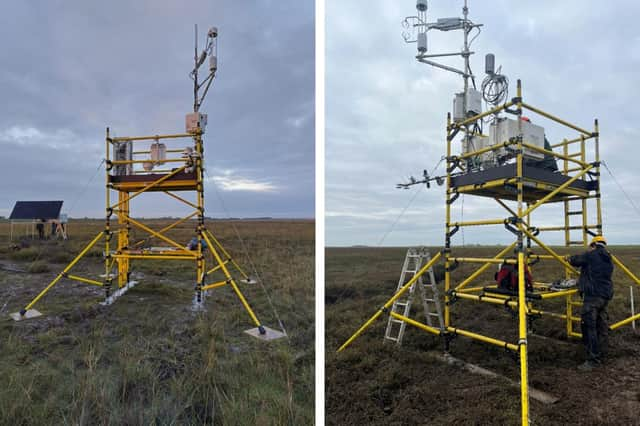'Superpower habitats' near Boston chosen for pioneering scientific study


RSPB Freiston Shore is to play host to two flux towers, it has been announced.
The equipment will measure how much carbon dioxide gas is captured from the atmosphere and stored as carbon within the saltmarsh ecosystem.
Advertisement
Hide AdAdvertisement
Hide AdThe aim is to provide evidence of this carbon-cutting characteristic and, as a result, unlock investment in restoration schemes for such coastal wetlands.
It also supports the UK’s efforts to mitigate climate change.
The Environment Agency (EA) will be monitoring two saltmarshes at RSPB Freiston Shore, working in partnership with the RSPB. One will be a natural saltmarsh, the other a restored saltmarsh.
The EA says saltmarshes perform a number of functions in addition to capturing carbon dioxide, such as providing habitat to a wide range of creatures and acting as a natural flood defence. It is estimated, though, that 85 per cent of UK saltmarsh has been lost since the mid-19th century.
Advertisement
Hide AdAdvertisement
Hide AdDr Ben Green, from the EA said: “These flux towers will improve our understanding of the ability of saltmarsh habitats to sequester carbon across tides, days, seasons and years.
“The evidence they will provide will be key to support the further restoration of saltmarshes, and for the inclusion of these habitats on the UK Greenhouse Gas Inventory".
The EA has worked in partnership with the UK Centre for Ecology & Hydrology (UKCEH) to purchase and install a total of four flux towers on saltmarshes across England. This has been funded by the Government’s Department for Environment, Food and Rural Affairs.
One of the other two towers is already in place in Essex, with another to follow. These four join two installed last year in the Ribble Estuary, in the North-West, by Natural England and WWF.
Advertisement
Hide AdAdvertisement
Hide AdDr Ross Morrison, biometeorologist at UKCEH, said: “Thanks to our new network of coastal flux towers, we’ll provide the first directly measured carbon budgets for a range of different saltmarsh systems across the country by the end of this year, improving our knowledge on how they might help us transition towards our net zero goals. Equally, the flux towers will help us understand how the processes in coastal environments function today, and how things may change into the future.”
UKCEH is leading a consortium across charity, finance and academic sectors to develop and pilot a UK Saltmarsh Carbon Code. This voluntary certification standard will enable saltmarsh carbon to be purchased, thereby providing an income stream for restoration projects and supporting the achievement of national net zero goals.
Toby Collett, from the RSPB, said: “The Wash estuary and the saltmarshes here are globally important for wildlife, but they are also vital for our way of life, whether that’s fishing, protecting communities from flooding or storing carbon.
“We’re really excited that Freiston Shore is being used to understand more about these superpower habitats, and hope that this will lead to further protection and restoration efforts for saltmarshes across the UK.”